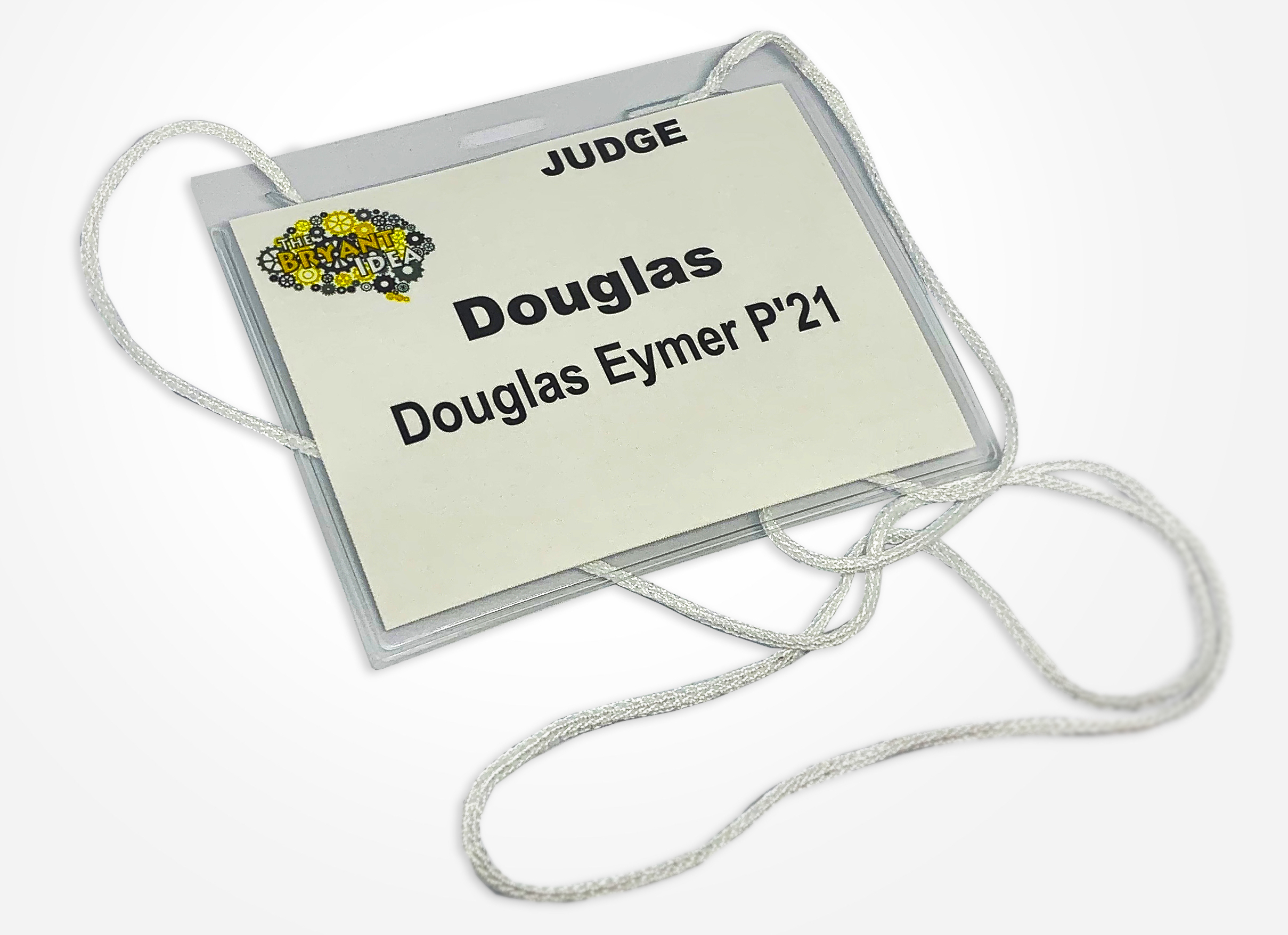Last Wednesday, I volunteered to be a judge for Bryant University's mandatory class for freshmen, IDEA (Innovation and Design Experience for All).
Here is the way that the course is described:
Bryant's IDEA Program consists of an intensive, experiential learning experience in which we will apply the design thinking process to 'real world' problems. More than 800 students will learn about the innovation process in 'true learning by doing' mode.
Specifically, they will learn about two key elements or building blocks for creating new innovations in any field: design thinking and teamwork. As part of this approximately 56-hour intensive experience, students will work in teams on projects covering a range of 'real world' situations, ranging from the arts to social services to business. They will practice elements of the design thinking process and work collaboratively-gathering information, generating ideas, and building prototypes–to come up with creative solutions to these critical challenges.
Each team consisting of between 3 and 5 students is presented with a business problem facing a real local business. For example, a local bowling alley is attempting to attract more millennials and is looking for strategies to do so.
The 4-5 teams (referred to as cohorts) assigned to each problem visited their specific business location on Monday and interviewed key personnel.
On Tuesday afternoon, teams began pitching their initial prototype concepts to faculty and staff members, fellow students, and Alumni Mentors. During these conversations, the initial ideas were honed and polished, while simultaneously bringing the teams together as a cohesive group, focused on the single direction that the group would take.
From this point until the start of judging on Wednesday afternoon at 1:30, teams refined their ideas, buffed up their presentation and built three-dimension models of their finely tuned solutions.
As one of 120 judges, I was given two cohorts with each consisting of five teams. One cohort addressed the bowling alley described above, while the second offered solutions for containing and entertaining children while parents shop in a grocery store.
During each 8-10 minute session with each of the ten teams, I was first given a presentation/demonstration and then able to ask questions about the process, the overall experience, and their final solution.
Once the presentation was complete, I was asked to score each team based on three criteria, with each worth a maximum of 20 points.
The judging criteria were as follows:
Process (1-20 points)
Field Observation and Research: Does the team demonstrate/discuss the vital role of field observation and research in the development of their project?
Brainstorming: Does the team demonstrate/discuss the critical role of effective brainstorming in the development of their plan?
Iteration (repetition/feedback loops): Does the team explain how the project was developed, refined, and improved over time?
Project (1-20 points)
User Needs: Does the concept/solution meet the needs of users? Is it desirable to them?
Originality and Feasibility: Is the concept/solution original and creative? Is it feasible and viable?
Quality of Exhibit: Did the team create a high-quality exhibit that conclusively demonstrates the idea?
Presentation (1-20 points)
Clarity: Is the team's discussion of their process and project clear?
Engagement: Do team members seem engaged and excited about presenting their idea?
Confidence: Does the team express confidence in their concept/solution and the process through which they arrived at it?
Attracting Millennials To The Bowling Alley
Some of the ideas presented included theme nights, adding large TV screens over the bowling pins, different color schemes for the lanes and potential alternatives to rental shoes as well as the spray used to disinfect them. Further discussion brought up the fact that fewer and fewer public schools are including bowling in their physical education curriculum. Knowing proper form is one issue but learning the unusual scoring system is another obstacle to a bowling newbie who may be intimidated by the whole experience. Then there is the issue of lousy bowling alley food. One group suggested eliminating the restaurant and outsourcing the dining experience to gourmet food trucks. This strategy is currently being implemented by several local brewpubs.
Taming Grocery Store Kids
Many of the ideas for calming children during the grocery shopping experience involved shopping cart alterations. A couple groups suggested adding an attached electronic tablet to cart. One variation was a two-sided tablet with entertainment on one side and a grocery tracker/calculator on the other. Another group suggested a cart attachment that would either hold a personal tablet, smartphone or traditional book. Concepts also included wider checkout aisles for families with non-electronic play stations adjacent to the cashier, reserved parking spots for those with children and the ability to pay from your vehicle after the kids have been buckled in.
From my own grocery store adventures, there is no simple answer to this problem and solving it will require many more hours than the 56 hours allotted to the IDEA cohorts.
A Truly Memorable Experience
After handing in my score sheet, I walked away extremely impressed with the Bryant University IDEA program and the problem-solving life skills that were being taught. It was beautiful to see students working together, apart from 'screens' and working to solve real business challenges. –Doug.





